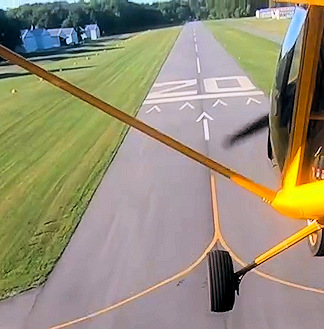Subscriber question:
"I learned to fly at an airport with a 5,000' paved runway and have never gotten comfortable landing on shorter runways. I plan to practice landing at shorter fields to help my confidence. Can you review the high points of short field landings?"
-Stephen G.
Bob:
 “The first step in a good short field procedure is doing your preflight planning—be sure to research your destination airport regarding runway lengths, obstacles, and airport layout. Compare the airport information to the performance capabilities of both the airplane and the pilot.
“The first step in a good short field procedure is doing your preflight planning—be sure to research your destination airport regarding runway lengths, obstacles, and airport layout. Compare the airport information to the performance capabilities of both the airplane and the pilot.
In a modern (Pilot’s Operating Handbook) POH, aircraft performance information is found in chapter five. You should use the procedure for landing in a short field or for landing over obstacles, as recommended in the POH.
This generally involves using full flaps, and starting the final approach from an altitude of at least 500′ higher than the touchdown area. You can also fly a slightly wider than normal pattern to give you more time to get the airplane configured and trimmed properly, which is critical on a short field approach.
If your POH doesn’t recommend a specific approach speed, a speed of not more than 1.3 times Vs0 (stall speed with landing configuration) should be used. For example, in your airplane stalls at 50 knots, then the approach should not be flown any higher than 65 knots. Excess airspeed may cause excessive float and an overshoot of a short runway.
A coordinated combination of pitch and power adjustments is required to maintain glide path and airspeed, but a stabilized approach is essential. When done properly, very little change of pitch and power is required.
If airspeed decreases below the target airspeed, initiate a go-around before the angle of attack becomes too great—in that condition, even full power may not allow a climb.
After touchdown, be certain that the throttle is closed, retract flaps as soon as practical if recommended by the manufacturer, and use appropriate braking.”
When landing, how much of a margin over the published landing distance from your POH (ground roll or over obstacles) do you require?
